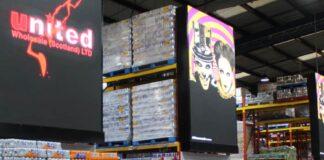5. Advise customers: Help them to pass on promotions to consumers.
While your prices may be pulling the crowds into the depot, getting retail customers to pass on savings is another challenge, particularly when bad execution of promotions means products could be sitting on retailers’ shelves for much longer than they should.
“38% of current convenience store shoppers expect to pay exactly the same prices as they do in supermarkets,” says Lucozade Ribena Suntory’s Matt Gouldsmith. “Therefore, passing on promotions to the consumer will help drive footfall in-store.”
Dhamecha’s Naren Chotai says savvy retailers will bulk-buy so that they can offer their customers savings during the promotional period then benefit from extra stock at a reduced price when it’s over.
Dhamecha holds regular ‘retailer evenings’, where retailers and suppliers are invited to discuss promotions that have run particularly well as well as where more support may be required.
Today’s Group does its part to ensure that retailers have the support they need by working with eXPD8, which has 2,000 ‘feet on the street’ checking promotional compliance in symbol stores.
“We look at everything from whether the right products are being promoted at the right price to whether posters, leaflets and other PoS material are being used – and in the right way,” says eXPD8’s Amanda Heritage.











GETTING A GOOD DEAL OUT OF GOOD DEALS: THE ART OF PROMOTION MANAGEMENT
The impact of price promotions on sales has become ever more important to the extent that they often play a dominant role in profit generation and really drive consumer behaviour – which is exactly what they are designed to do, of course. However, the way promotions pump up sales volumes and have an impact on the sales of other lines puts great stress on the supply chain, especially on the forecasting and replenishment of fresh goods.
The challenge lies in incorporating promotion forecasting and replenishment into the supply chain planning processes; this can typically be overcome by following seven best practice tips.
1. Manage campaign information and forecast variables in the forecasting system;
2. Include logistical information such as required presentation levels as well as preferred delivery dates for initial quantities including stock for presentation purposes;
3. Let the system calculate the promotion forecast for consumer sales as well as the order forecast;
4. Review the forecasts and compare with previous campaigns - and modify them, if needed;
5. Collaborate with suppliers to ensure capacity and availability for fulfilment;
6. Execute to plan and demand;
7. Review success based on key metrics including operative supply chain KPIs and commercial KPIs
Best practice suggests that by incorporating highly granular data into a new breed of supply chain management technology, new insights can be achieved which ultimately help drive better planned and executed promotions that maximise sales without negatively affecting sales of other product lines or profit margins.
The more important promotions are for sales, the more important it is to include them in the forecasting and replenishment processes. Better promotion forecasting leads to better planned promotions using better data, which helps forecast subsequent campaigns more accurately.